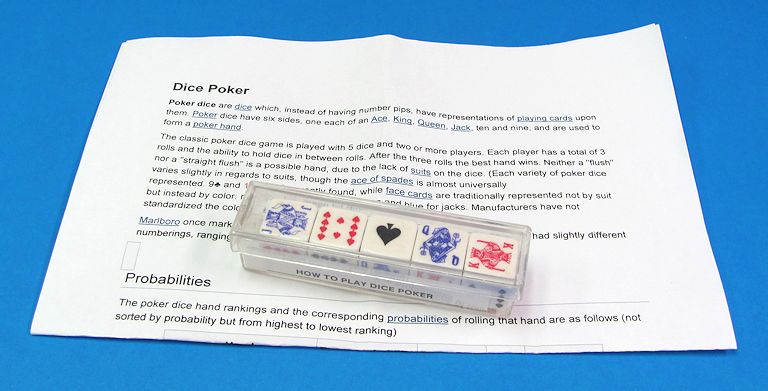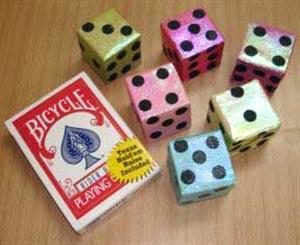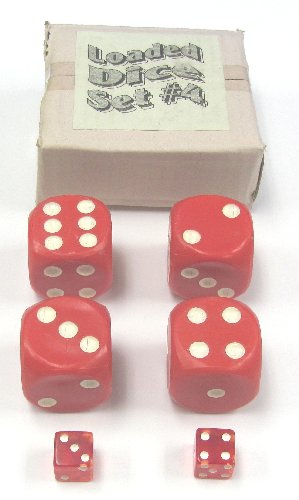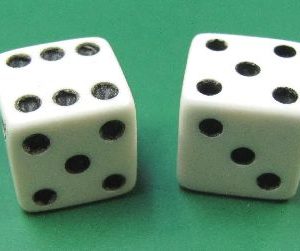Description
Poker dice are dice which, instead of having number pips, have representations of playing cards upon them. Poker dice have six sides, one each of an Ace, King, Queen, Jack, 10, and 9, and are used to form a poker hand.
Each variety of poker dice varies slightly in regard to suits, though the ace of spades is almost universally represented. 9♣ and 10♦ are frequently found, while face cards are traditionally represented not by suit, but instead by color: red for kings, green for queens and blue for jacks. Manufacturers have not standardized the colors of the face sides. The game can also be played with ordinary dice.
The classic poker dice game is played with five dice and two or more players. Each player has a total of three rolls and the ability to hold dice in between rolls. After the three rolls, the best hand wins.
In most variations, a straight only counts as a Bust (high-card). A Straight is less probable than a Full House, so, if counted, it should rank above a Full House, though tradition usually ranks it below Full House, as in card poker. Neither a “flush” nor a “straight flush” is a possible hand, due to the lack of suits on the dice.
In some rules, only a straight to a King is called a Straight, while a straight to an Ace is called (somewhat incorrectly) a Flush. Each one has an exact probability of 120 / 7776. Under these rules, a Straight beats a Full House (unlike in card poker, but correctly reflecting its probability) but does not beat a Four of a Kind (incorrectly reflecting its lower probability). A Flush beats a Four of a Kind (as in card poker, and correctly reflecting its lower probability).





